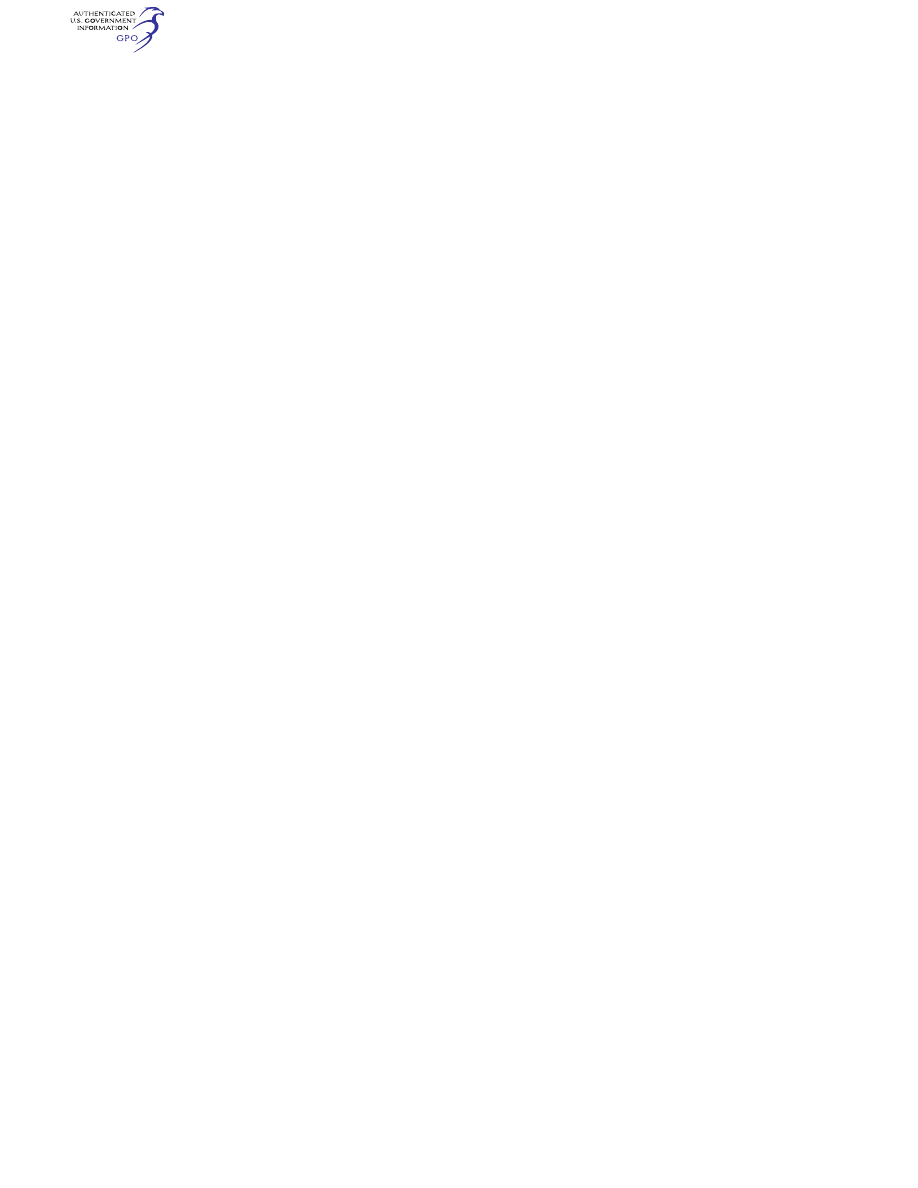
159
Federal Aviation Administration, DOT
§ 21.183
(i) The aircraft meets the definition
of a light-sport aircraft;
(ii) The aircraft conforms to its origi-
nal configuration, except for those al-
terations performed in accordance with
an applicable consensus standard and
authorized by the aircraft’s manufac-
turer or a person acceptable to the
FAA;
(iii) The aircraft has no unsafe condi-
tion and is not likely to develop an un-
safe condition; and
(iv) The aircraft is registered in the
United States.
(4) An experimental certificate for re-
search and development, showing com-
pliance with regulations, crew train-
ing, or market surveys is effective for 1
year after the date of issue or renewal
unless the FAA prescribes a shorter pe-
riod. The duration of an experimental
certificate issued for operating ama-
teur-built aircraft, exhibition, air-rac-
ing, operating primary kit-built air-
craft, or operating light-sport aircraft
is unlimited, unless the FAA estab-
lishes a specific period for good cause.
(b) The owner, operator, or bailee of
the aircraft must, upon request, make
it available for inspection by the FAA.
(c) Upon suspension, revocation, or
termination by order of the FAA of an
airworthiness certificate, the owner,
operator, or bailee of an aircraft must,
upon request, surrender the certificate
to the FAA.
[Amdt. 21–21, 33 FR 6858, May 7, 1968, as
amended by Amdt. 21–49, 44 FR 46781, Aug. 9,
1979; Amdt. 21–70, 57 FR 41368, Sept. 9, 1992;
Amdt. 21–85, 69 FR 44861, July 27, 2004]
§ 21.182
Aircraft identification.
(a) Except as provided in paragraph
(b) of this section, each applicant for
an airworthiness certificate under this
subpart must show that his aircraft is
identified as prescribed in § 45.11.
(b) Paragraph (a) of this section does
not apply to applicants for the fol-
lowing:
(1) A special flight permit.
(2) An experimental certificate for an
aircraft not issued for the purpose of
operating amateur-built aircraft, oper-
ating primary kit-built aircraft, or op-
erating light-sport aircraft.
(3) A change from one airworthiness
classification to another, for an air-
craft already identified as prescribed in
§ 45.11.
[Amdt. 21–13, 32 FR 188, Jan. 10, 1967, as
amended by Amdt. 21–51, 45 FR 60170, Sept.
11, 1980; Amdt. 21–70, 57 FR 41368, Sept. 9,
1992; Amdt. 21–85, 69 FR 44862, July 27, 2004]
§ 21.183
Issue of standard airworthi-
ness certificates for normal, utility,
acrobatic, commuter, and transport
category aircraft; manned free bal-
loons; and special classes of air-
craft.
(a)
New aircraft manufactured under a
production certificate. An applicant for a
standard airworthiness certificate for a
new aircraft manufactured under a pro-
duction certificate is entitled to a
standard airworthiness certificate
without further showing, except that
the FAA may inspect the aircraft to
determine conformity to the type de-
sign and condition for safe operation.
(b)
New aircraft manufactured under
type certificate. An applicant for a
standard airworthiness certificate for a
new aircraft manufactured under a
type certificate is entitled to a stand-
ard airworthiness certificate upon pres-
entation, by the holder or licensee of
the type certificate, of the statement
of conformity prescribed in § 21.130 if
the FAA finds after inspection that the
aircraft conforms to the type design
and is in condition for safe operation.
(c)
Import aircraft. An applicant for a
standard airworthiness certificate for
an import aircraft is entitled to that
certificate if—
(1) The aircraft is type certificated in
accordance with § 21.21 or § 21.29 and
produced under the authority of an-
other State of Manufacture;
(2) The State of Manufacture cer-
tifies, in accordance with the export
provisions of an agreement with the
United States for import of that air-
craft, that the aircraft conforms to the
type design and is in condition for safe
operation; and
(3) The FAA finds that the aircraft
conforms to the type design and is in
condition for safe operation.
(d)
Used aircraft and surplus aircraft of
the U.S. Armed Forces. An applicant for
a standard airworthiness certificate for
a used aircraft or surplus aircraft of
the U.S. Armed Forces is entitled to a
standard airworthiness certificate if—
VerDate Sep<11>2014
09:06 Jun 28, 2024
Jkt 262046
PO 00000
Frm 00169
Fmt 8010
Sfmt 8002
Y:\SGML\262046.XXX
262046
jspears on DSK121TN23PROD with CFR

160
14 CFR Ch. I (1–1–24 Edition)
§ 21.183
(1) The applicant presents evidence to
the FAA that the aircraft conforms to
a type design approved under a type
certificate or a supplemental type cer-
tificate and to applicable Airworthi-
ness Directives;
(2) The aircraft (except an experi-
mentally certificated aircraft that pre-
viously had been issued a different air-
worthiness certificate under this sec-
tion) has been inspected in accordance
with the performance rules for 100-hour
inspections set forth in § 43.15 of this
chapter, or an equivalent performance
standard acceptable to the FAA, and
found airworthy by—
(i) The manufacturer;
(ii) The holder of a repair station cer-
tificate as provided in Part 145 of this
chapter;
(iii) The holder of a mechanic certifi-
cate as authorized in Part 65 of this
chapter; or
(iv) The holder of a certificate issued
under part 121 of this chapter, and hav-
ing a maintenance and inspection orga-
nization appropriate to the aircraft
type; and
(3) The FAA finds after inspection,
that the aircraft conforms to the type
design, and is in condition for safe op-
eration.
(e)
Noise requirements. Notwith-
standing all other provisions of this
section, the following must be com-
plied with for the original issuance of a
standard airworthiness certificate:
(1) For transport category large air-
planes and jet (turbojet powered) air-
planes that have not had any flight
time before the dates specified in
§ 36.1(d), no standard airworthiness cer-
tificate is originally issued under this
section unless the FAA finds that the
type design complies with the noise re-
quirements in § 36.1(d) in addition to
the applicable airworthiness require-
ments in this section. For import air-
planes, compliance with this paragraph
is shown if the country in which the
airplane was manufactured certifies,
and the FAA finds, that § 36.1(d) (or the
applicable airplane noise requirements
of the country in which the airplane
was manufactured and any other re-
quirements the FAA may prescribe to
provide noise levels no greater than
those provided by compliance with
§ 36.1(d)) and paragraph (c) of this sec-
tion are complied with.
(2) For normal, utility, acrobatic,
commuter, or transport category pro-
peller driven small airplanes (except
for those airplanes that are designed
for ‘‘agricultural aircraft operations’’
(as defined in § 137.3 of this chapter, as
effective on January 1, 1966) or for dis-
pensing fire fighting materials to
which § 36.1583 of this chapter does not
apply) that have not had any flight
time before the applicable date speci-
fied in part 36 of this chapter, no stand-
ard airworthiness certificate is origi-
nally issued under this section unless
the applicant shows that the type de-
sign complies with the applicable noise
requirements of part 36 of this chapter
in addition to the applicable airworthi-
ness requirements in this section. For
import airplanes, compliance with this
paragraph is shown if the country in
which the airplane was manufactured
certifies, and the FAA finds, that the
applicable requirements of part of this
chapter (or the applicable airplane
noise requirements of the country in
which the airplane was manufactured
and any other requirements the FAA
may prescribe to provide noise levels
no greater than those provided by com-
pliance with the applicable require-
ments of part 36 of this chapter) and
paragraph (c) of this section are com-
plied with.
(f)
Passenger emergency exit require-
ments. Notwithstanding all other provi-
sions of this section, each applicant for
issuance of a standard airworthiness
certificate for a transport category air-
plane manufactured after October 16,
1987, must show that the airplane
meets the requirements of § 25.807(c)(7)
in effect on July 24, 1989. For the pur-
poses of this paragraph, the date of
manufacture of an airplane is the date
the inspection acceptance records re-
flect that the airplane is complete and
meets the FAA-approved type design
data.
(g)
Fuel venting and exhaust emission
requirements. Notwithstanding all other
provisions of this section, and irrespec-
tive of the date of application, no air-
worthiness certificate is issued, on and
after the dates specified in part 34 for
the airplanes specified therein, unless
VerDate Sep<11>2014
09:06 Jun 28, 2024
Jkt 262046
PO 00000
Frm 00170
Fmt 8010
Sfmt 8002
Y:\SGML\262046.XXX
262046
jspears on DSK121TN23PROD with CFR

161
Federal Aviation Administration, DOT
§ 21.184
the airplane complies with the applica-
ble requirements of that part.
(h)
New aircraft manufactured under
the provisions of § 21.6(b). An applicant
for a standard airworthiness certificate
for a new aircraft manufactured under
the provisions of § 21.6(b) is entitled to
a standard airworthiness certificate
if—
(1) The applicant presents evidence to
the FAA that the aircraft conforms to
a type design approved under a type
certificate or supplemental type cer-
tificate and to applicable Airworthi-
ness Directives;
(2) The aircraft has been inspected in
accordance with the performance rules
for a 100-hour inspections set forth in
§ 43.15 of this chapter and found air-
worthy by a person specified in para-
graph (d)(2) of this section; and
(3) The FAA finds after inspection,
that the aircraft conforms to the type
design, and is in condition for safe op-
eration.
[Amdt. 21–17, 32 FR 14927, Oct. 28, 1967]
E
DITORIAL
N
OTE
: For F
EDERAL
R
EGISTER
ci-
tations affecting § 21.183, see the List of CFR
Sections Affected, which appears in the
Finding Aids section of the printed volume
and at
www.govinfo.gov.
§ 21.184
Issue of special airworthiness
certificates for primary category
aircraft.
(a)
New primary category aircraft man-
ufactured under a production certificate.
An applicant for an original, special
airworthiness certificate-primary cat-
egory for a new aircraft that meets the
criteria of § 21.24(a)(1), manufactured
under a production certificate, includ-
ing aircraft assembled by another per-
son from a kit provided by the holder
of the production certificate and under
the supervision and quality control of
that holder, is entitled to a special air-
worthiness certificate without further
showing, except that the FAA may in-
spect the aircraft to determine con-
formity to the type design and condi-
tion for safe operation.
(b)
Imported aircraft. An applicant for
a special airworthiness certificate-pri-
mary category for an imported aircraft
type certificated under § 21.29 is enti-
tled to a special airworthiness certifi-
cate if the civil airworthiness author-
ity of the country in which the aircraft
was manufactured certifies, and the
FAA finds after inspection, that the
aircraft conforms to an approved type
design that meets the criteria of
§ 21.24(a)(1) and is in a condition for
safe operation.
(c)
Aircraft having a current standard
airworthiness certificate. An applicant
for a special airworthiness certificate-
primary category, for an aircraft hav-
ing a current standard airworthiness
certificate that meets the criteria of
§ 21.24(a)(1), may obtain the primary
category certificate in exchange for its
standard airworthiness certificate
through the supplemental type certifi-
cation process. For the purposes of this
paragraph, a current standard air-
worthiness certificate means that the
aircraft conforms to its approved nor-
mal, utility, or acrobatic type design,
complies with all applicable airworthi-
ness directives, has been inspected and
found airworthy within the last 12 cal-
endar months in accordance with
§ 91.409(a)(1) of this chapter, and is
found to be in a condition for safe oper-
ation by the FAA.
(d)
Other aircraft. An applicant for a
special airworthiness certificate-pri-
mary category for an aircraft that
meets the criteria of § 21.24(a)(1), and is
not covered by paragraph (a), (b), or (c)
of this section, is entitled to a special
airworthiness certificate if—
(1) The applicant presents evidence to
the FAA that the aircraft conforms to
an approved primary, normal, utility,
or acrobatic type design, including
compliance with all applicable air-
worthiness directives;
(2) The aircraft has been inspected
and found airworthy within the past 12
calendar months in accordance with
§ 91.409(a)(1) of this chapter and;
(3) The aircraft is found by the FAA
to conform to an approved type design
and to be in a condition for safe oper-
ation.
(e)
Multiple-category airworthiness cer-
tificates in the primary category and
any other category will not be issued; a
primary category aircraft may hold
only one airworthiness certificate.
[Doc. No. 23345, 57 FR 41368, Sept. 9, 1992, as
amended by Amdt. 21–70, 57 FR 43776, Sept.
22, 1992]
VerDate Sep<11>2014
09:06 Jun 28, 2024
Jkt 262046
PO 00000
Frm 00171
Fmt 8010
Sfmt 8002
Y:\SGML\262046.XXX
262046
jspears on DSK121TN23PROD with CFR


